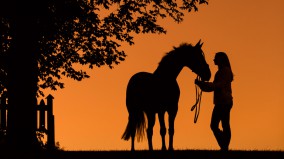 I started riding at 11. I took lessons on horses that were only vaguely sound, with ill-fitting tack, who received a bute a day to keep them teaching two lessons a day, six days a week. I rode in arenas where motor oil was used to keep the footing from being dusty, and at barns where horses were kept in standing stalls all day long.
I started riding at 11. I took lessons on horses that were only vaguely sound, with ill-fitting tack, who received a bute a day to keep them teaching two lessons a day, six days a week. I rode in arenas where motor oil was used to keep the footing from being dusty, and at barns where horses were kept in standing stalls all day long.
Going to college in New York I went on a hack around Central Park where we rented livery horses who lived on the second and third stories of an apartment building. And now, as a professional, I’ve had clients bring me horses in trailers with holes in the floor, or who share their fields with barbed wire or rusty cars.
I’ve also seen horses in top performance barns, with phenomenal care, get hurt. Get sick. Die. I know of a horse who got cast in his stall, fractured his leg, sent a piece of bone through the femoral artery and bled to death in the middle of the day. I knew a horse who was put on the lunge line to get some exercise on a brutally cold winter day, too cold to ride, only to buck once hard, land just so, and shatter a pastern.
In 20-plus years with horses, if it’s two things I’ve learned, it’s these: 1) that the one Universal Truth in horses is that there are no Universal Truths; and 2) horses are livestock trying to become deadstock. If they can find a creative way to injure or maim themselves, they will.
Read the rest at The Chronicle of the Horse.